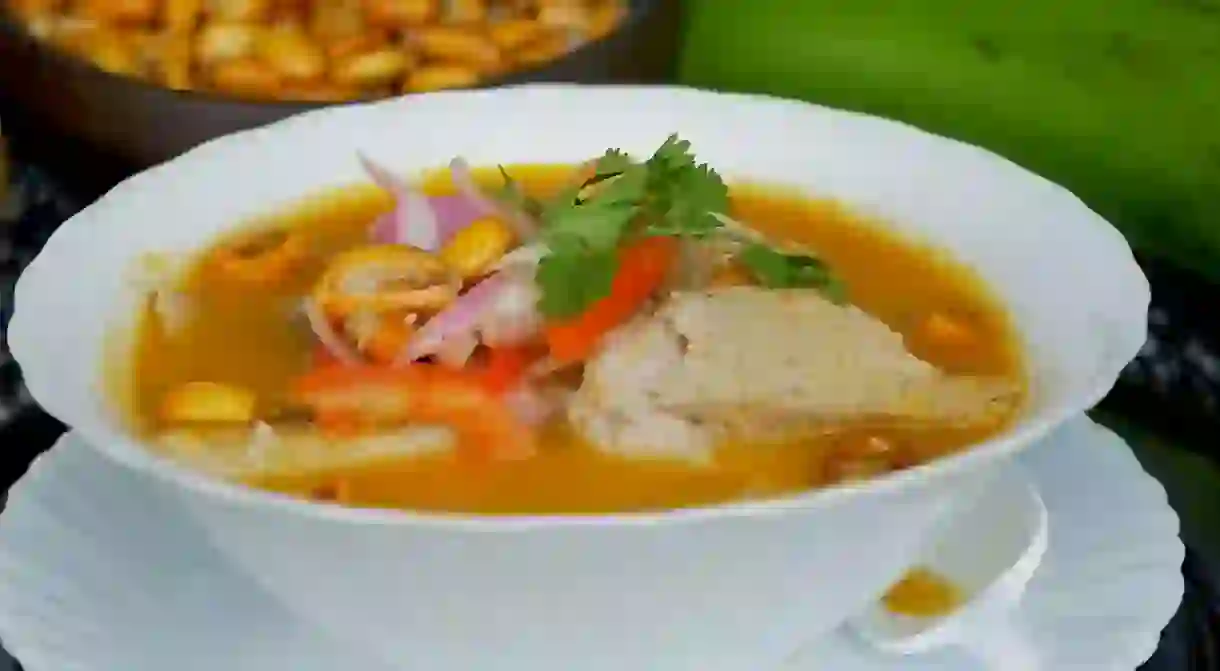A Guide to Ecuador’s Most Delicious Soups

Ecuadorians cannot imagine a meal without soup, whether it’s a pick-me-up breakfast bowl of encebollado or the first course at lunch. Dinner, the smaller meal of the day for most Ecuadorian families, is often a hearty soup, such as a locro de papas or sancocho. If you’re unfamiliar with all of these names, read on to learn more about the delicious options available in many Ecuadorian restaurants.
Cremas
Cream soups are generally made to highlight a single ingredient, such as a cream of asparagus, a cream of sambo, a member of the squash family that grows and looks like a watermelon, or cream of crab, a specialty along much of the Pacific Coast. Usually made with milk rather than half-and-half, cream soups are almost always accompanied by a side of freshly prepared popcorn.
Locros
Locro de papas
There are as many recipes for locro de papas as there are chefs making it. Ironic considering the ingredients are simple—potatoes, onion, garlic, water, milk, a little salt and pepper to taste. Almost every recipe includes adding diced fresh cheese and sliced avocado to the bowl just before serving. It’s a magical combination that never disappoints.

Yaguarlocro
Yaguarlocro includes all the ingredients of locro de papas but with the addition of sheep’s blood and tripe. This dish is not for the faint of heart, but if you enjoy Mexican menudo, then you are likely to savor the textures of this Andean specialty.
Caldos
Caldo de Gallina Criolla
The caldo de gallina criolla is the Ecuadorian equivalent to your grandmother’s restorative chicken soup. Ecuadorians believe a farm-raised chicken, a gallina criolla, makes a healthier and tastier broth. Unlike the American versions, this soup is served with a whole piece of chicken on the bone and with its skin in the middle of the bowl.

Caldo de Patas
If you’ve been under the weather or are expecting a baby, don’t be surprised if someone offers you caldo de patas, a soup made with a cow’s hoof. The best versions of this soup are served very hot so that the gelatinous marrow is silky and unctuous.
Caldo de Bola de Verde
A hearty soup popular on the Ecuadorian coast, caldo de bola de verde always includes a partial ear of corn and chunks of yuca. The soup is named for the dumpling of mashed green plantain stuffed with a meat filling that provides the base of the meal.
Fanescas
Traditional Fanesca
During the season of Lent, called Cuaresma in Spanish, Ecuadorians eat fanesca, an Andean soup traditionally made using 12 locally grown grains and legumes. Though meatless, this dish is packed full of protein and is a heavy meal all its own. Traditionally served with garnishes of small fried empanadas, slices of fried, sweet plantain, a hard-boiled egg, slices of hot pepper, and salt cod, this soup takes center stage on Good Friday.

Coastal Fanesca
While most Ecuadorians make some version of the high Sierran Fanesca, coastal communities often make a fanesca with locally caught seafood. Recipes differ up and down the coast, from Guayaquil to the Esmereldas.
Encebollados
A traditional soup from the coast of Ecuador, encebollado is so popular that people eat it nationwide. Most often made with tuna caught off the Pacific Coast, this fish soup makes a hearty breakfast and is found in small, family-run restaurants with early morning opening times. A large pot can go a long way, but once the restaurant sells out, sometimes well before lunch, that’s it for the day.

Sancochos
A sancocho is a brothy soup made with different proteins but always includes a half ear of corn, chunks of boiled yuca and boiled green plantain, as well as other vegetables. This soup is sometimes served as a meal on its own or the first course at lunch.














